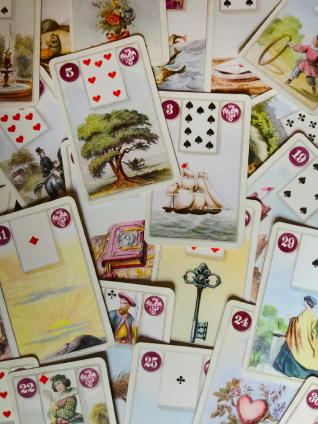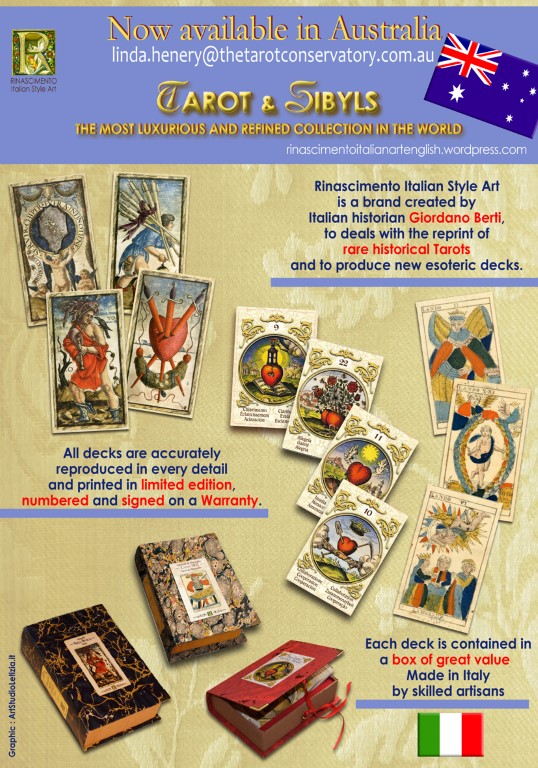The Lenormand Oracle has for many, many years has remained a secret to much of the world. With its European origin and the tradition of oral teaching much of it’s magic has missed the attention of many tarot readers and lovers of the mystic. So it’s really quite amazing that you’ve found it! If you’re brand new to Lenormand and would like to know more, here are our best tips for getting you started and no doubt falling in love with this magical little deck.
Where can you buy Lenormand cards?
First and foremost, you’ll of course need a deck of Lenormand cards. We’ll be adding a shop with some of our favourite decks soon, but in the meantime there’s a few other options for you. You may have a lovely local esoteric or book store you can find a deck (it’s always great to support small and local!) or there’s many options online from Etsy, EBay, Book Depository & Amazon.
Which Lenormand deck is best?
The style of your deck should reflect your own style, a theme and aesthetic you find beautiful. There’s reproduced old decks available, ultra modern and everything in between. More important than the style is the simplicity of reading the symbols on the cards. When looking for a first deck, look for clear images that can be identified immediately. We don’t really study tiny details within a cards design when reading Lenormand, the cards are read fast and the symbols should not be confusing for a single moment. You don’t want to confuse the garden for the tree card, nor the stars for the moon card (and vice versa!) – clear symbols, clear messages.
Are playing card inserts or poems best?
When you start reading, it’s perfectly fine to ignore anything other than the symbol on the card and you’ll find modern decks that have neither playing card or poem inserts.
Some of the older style cards have poems inserted, often in languages other than English. Personally, aside from a few antique decks, I try to avoid these. Even in English, it’s possible that the poems lead you astray from the meaning of the card and cause confusion. Much preferred is a playing card insert. As you’ll learn, a lot of extra information can be gained from the suits and numbers on the cards – so generally I find playing card inserts (commonly called “pips”) add far more to a reading than poems.

Traditional Cards with clear symbols are ideal.
How can I learn to read Lenormand?
We offer both online and in person courses and workshops, but there’s also many books available on Lenormand. Your first step will be identifying each card and the meaning of its symbol. You’ll find as you go along that the meanings deepen with experience and you’ll add more layers as every card has primary, secondary and tertiary meanings. The cards can be also be read in combination, creating even deeper understanding of the message they bring.
Which are the correct Lenormand card meanings?
It’s easy to get excited about Lenormand and look to buy every book and subscribe to every group in an effort to fast track your learning – but be warned that not everyone will use the same card meanings. The Moon card for example, will mean romance, dreams, fame or recognition to some and work to others. Another card causing confusion can be the Fox, which for some represents work (think 9-5 employment) and for others a sneaky and cunning individual or situation. So which is the right meaning? The one that makes sense to you! It’s important to establish which system you will use and to stick to it. You’ll quickly get to know how the cards speak to you and once established there’ll be far less confusion, I promise.
How to start reading Lenormand
Once you have a deck of cards, have established their individual meanings you can start right away. Keeping the readings small and simple is ideal for beginners. A good practice is to draw three cards at the beginning of each day. Ask the cards to “please, show me my day today?”, shuffle and draw three cards. Some days you’ll find a strikingly easy answer comes to you immediately, other days it may take reflection at night to draw the message of the cards. Just as it’s important to practice regularly, it’s just as important to reflect and compare your prediction versus the outcome to fine tune your understanding of how the cards speak to you as this will be different from reader to reader.
If you’re asking a yes or no question, always frame your question in the positive.
For example: you have an important exam coming up and and you’d like to know the outcome:
Ask “will I pass the test” rather than “will I fail the test.
Asking in the positive allows the positive (yes) and negative (no) cards to you speak clearly.
If we asked “will I fail the test?”
And drew CROSSROADS, LILY, SUN
The SUN tells us YES, it’s a card of success… but does that mean you’ll successfully pass the test or yes, you will fail the test?
If we asked “will I pass the test?”
And drew the same cards, the SUN’s message is clear – YES, you’ll be successful (the LILY and CROSSROADS remind us to take our time and double check our answers!)
Tips for beginners learning Lenormand
Choose a deck with clear symbols. Traditional decks have extra merit as much of the meanings of the cards come from the meaning of the symbol at the time the cards were produced – the garden for example, refers to a public place, social groups more so than your back yard. This is a perfect example of the meaning of a garden in the period of when the cards were created. In the 1800’s poets would perform their work in public places and crowds would gather to listen – so you can see that the history of the deck, the period of which the symbols represent, play an important part in accurately interpreting their message.
Begin with small readings. Build your readings up as your confidence and accuracy grows. Too many cards can be overwhelming, aim for high understanding rather than a high number of cards.
Stick with your system and avoid over studying and under practicing actual readings. Two many differing opinions will only cause confusion.
Work on building your understanding of each card before you start combining and don’t try to memorise any list of card combination meanings you may find in books.
Many people find reading for other people easier than reading for themselves. I presume it’s the ability to remove the emotion from the reading that makes the difference. If you’re asking about something that you really, really want to happen and see negative cards it’s easy to get distracted, disheartened or to try and manipulate the meanings to create the outcome you desire. If you’re struggling to read for yourself you can try asking the cards about the ending of a movie you’re watching, world events, or anything else that’s less emotive for you. This is a great practice for growing your ability to read with an open mind and with a non-partisan approach.
Try keeping a Lenormand journal. As mentioned reflection is where we learn the accuracy of our readings. Keeping a journal with your readings, by recording the question, the cards drawn and your prediction will give you a great source of reference. When the outcome has come to pass, go back to your reading and reflect on the message from the cards.
When all else fails, relax and reset.
If the cards don’t make any sense to you, it’s perfectly ok to draw again. Refocus, re-ask reshuffle and redraw. A clear mind and a clear question is key to a clear answer!

